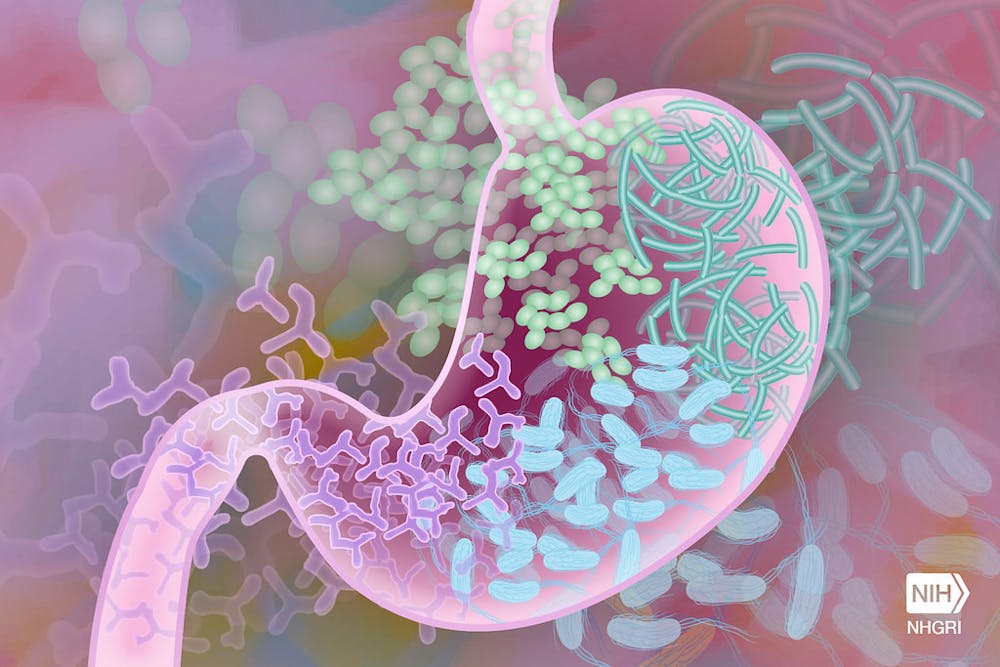A new semester has begun as we returned to a snowy campus. This week’s science news reveals exciting new insights that can help transition our mindset from vacation to school.
Hydrogen can turn aluminum mining waste into climate-friendly steels and concrete
Aluminum is a metal that has a wide variety of applications from household items to aerospace, energy, and transportation. Aluminum oxide, which is later isolated into pure aluminum, can be obtained from mining a type of rock called bauxite. However, this extraction leaves behind waste called red mud that has high alkalinity, contains toxic substances and is difficult to dispose of safely.
Red mud can contain up to 70% of its weight in iron in the form of iron oxide. To make the iron in this waste useful, removing the oxygen is necessary. Scientists from the Max Planck Institute for Iron Research identified ionized hydrogen plasma as an efficient way to isolate pure metals from iron ore.
If iron can be isolated from red mud, new steel can be created. What is left can produce concrete for use in construction after its pH is neutralized. A previously hard-to-dispose waste now has the potential to be transformed into useful materials.
To realize this waste treatment method, there are challenges such as using sustainable energy sources to power the process, controlling fumes from the process and identifying and constructing optimal processing locations.
Eukaryotic multicellularity occurred 600 million years earlier than previously thought
Two Chinese paleontologists identified Qingshania magnifica amongst microscopic fossils discovered in North China in 1989. When they found multiple cells with cell walls and spores (reproductive unicellular organisms produced by plants), the scientists concluded that the microfossil was similar to a modern eukaryotic green algae.
Multicellularity distinguishes prokaryotes, such as bacteria, from eukaryotes such as plants and animals. It enables cells to arrange, interact and perform functions that unicellular organisms are not able to do.
The researchers’ new study adds to the existing pool of evidence that suggests eukaryotic multicellular organisms emerged earlier than expected. Other researcher teams have found eukaryotic fossils in rocks that are around 1.6 million years old, which is 600 million years earlier than previously thought. This means that eukaryotic multicellularity took longer to evolve due to its increasing complexity and variety. In addition, fossil evidence of those early multicellular eukaryotes shows diverse cellular structures and properties, many of which are precursors to more complex multicellular eukaryotes. This expands the period in which more researchers can explore the origin and evolution of multicellularity in eukaryotes.
Chronic stress can reshape the gut microbiome
Stress not only affects the cognitive abilities of the brain but also exerts influence on the gut through the gut-brain axis via pathways such as the vagus nerve and the sympathetic nervous system. Gastrointestinal diseases, such as irritable bowel syndrome, are concurrent with mental stress.
A recent study found altered gut microbiomes in mice exposed to chronic stress compared to those in the control group. Chronic stress was correlated with the reduced ability of intestinal stem cells to become intestinal epithelial cells with protection functions. This transformation is hindered by increased indole-3-acetate (IAA) levels due to the proliferation of bacteria Lactobacillus.
In mice, the researchers identified α-ketoglutarate, an essential substance to cell metabolism, as an antidote that can stimulate the transformation from stem cells to protector cells in the intestine. Future research is suggested to investigate the potential of α-ketoglutarate as an antidote to chronic stress in humans and focus on the upstream mechanisms of which the brain affects bacterial proliferation in the first place.
Genetic evidence from Brazilian remains adds new evidence to known history of syphilis-causing bacteria
Syphilis is a bacterial infection by Treponema pallidum that can be transmitted through sexual contact. The disease starts manifesting as sores around the area of infection. If left untreated, syphilis can spread to other parts of the body such as the brain, the eyes and the ears, causing dysfunction and deterioration in those organs.
T. pallidum leads to other diseases such as bejel and yaws. Diseases caused by T. pallidum are known as treponemal diseases.
Two archaeogeneticists at the University of Zurich have been investigating the history of T. pallidum and the diseases it brings to humans. In 2020, they found the existence of syphilis-causing strains in Europe before Christopher Columbus’ return, casting doubt on previous claims that the crew brought syphilis from the Americas to Europe during the Age of Discovery.
In a recent study, the researchers examined genetic evidence in human remains buried on Brazil’s southern coast. They discovered that strain distribution has changed between 2000 years ago and now. The ancient bacterial genome is more similar to the strain that causes bejel, a disease not typical in South America today. On the other hand, syphilis and yaw both exist in South America today, though their presence is not reflected in the historical evidence. The study also suggested T Pallidum’s diversification occurred ten thousand years earlier than previously thought.





